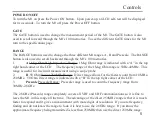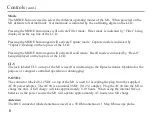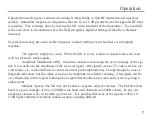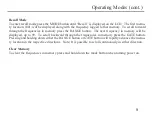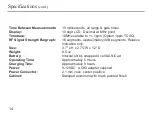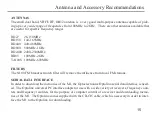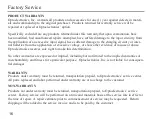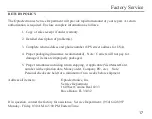
7
Optoelectronics frequency counters are unique in their ability to find RF transmission frequencies
quickly. Immediate response to frequencies that are 10 to 15 dB greater the the background RF floor
is possible. This is simply done by moving the M1 in the nearfield of the transmitter. The nearfield
is the area close to the antenna where the field strength is high but falling off rapidly as distance
increases.
Several factors may prevent a stable frequency counter reading even when there is a bargraph
response.
The signal is simply too weak. While the M1 is a very sensitive counter it does not react
well to extremely weak signals.
Amplitude Modulation (AM). Since the counter is measuring the zero crossings of the sig-
nal, it is sensitive to the amplitude of the received signal. AM signals such as TV video carriers, air-
craft radios, etc. can be difficult to count since their peak amplitude may be high enough to cause a
bargraph indication, but the valley is too low in amplitude for reliable counting. AM signals can be
very frustrating in this regard, looking like a signal that should easily count and yet never giving a
stable count.
Multiple signals. The M1 may not be able to separate adjacent carriers. The FM broadcast
band is a good example of this, a 20MHz wide band with channels on 200kH centers. In any city
numerous stations will exist within a given area. It is possible that none of the signals will be 10-
15dB higher than the rest which makes accurate counting difficult.
Operation
Summary of Contents for M1
Page 2: ...M1 USER MANUAL ...






